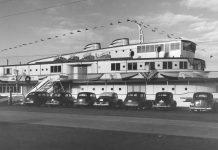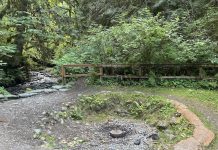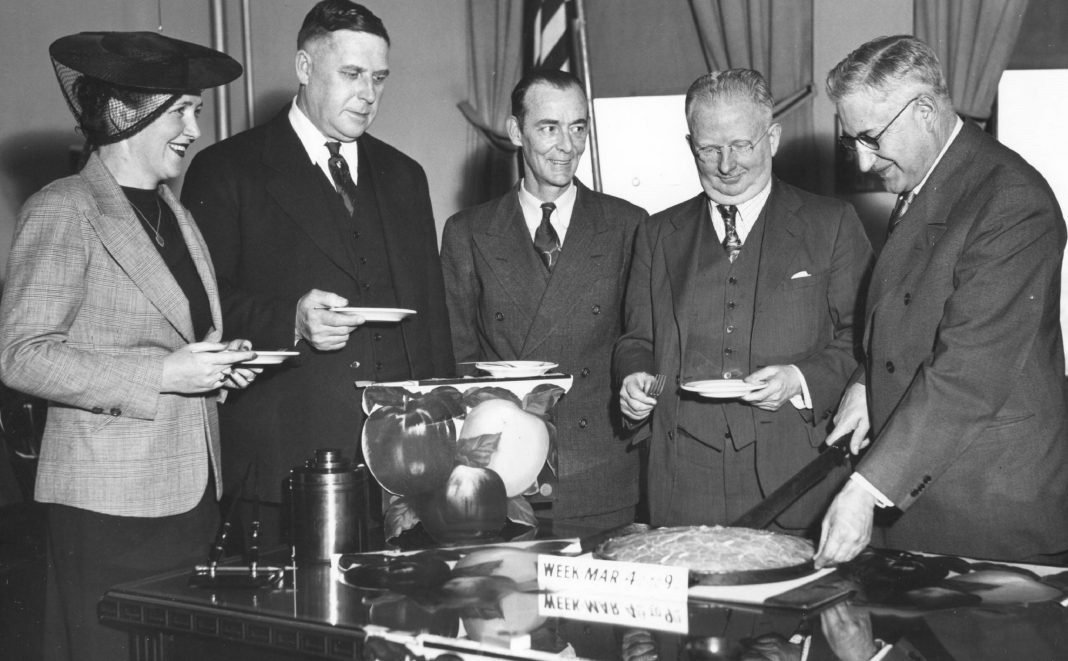On November 3, 1939, visitors to Tacoma City Hall could get a free apple while supplies lasted. Stores throughout the city displayed and sold apples and apple products. Even the prisoners in the Tacoma Jail were munching on apples. Why all this excitement about apples? With the war in Europe cutting off international trade, the Washington apple industry struggled. Tacoma mayor J. J. Kaufmann joined cities throughout the region by declaring Saturday, November 3 as “Apple Day” and November as “Apple Month.”
The city celebrated “Apple Pie Week” the following year, from March 4 to 9. Apple Pie Week returned in 1941 from January 15 to 25. To help promote the 1941 event, the Tacoma Young Men’s Business Club presented mayor Harry P. Cain with a four-foot apple pie at a reception at the Hotel Winthrop, baked by Lee L. Hodgert. The celebration was canceled the next year because of World War II, with its accompanying food and fuel rationing.
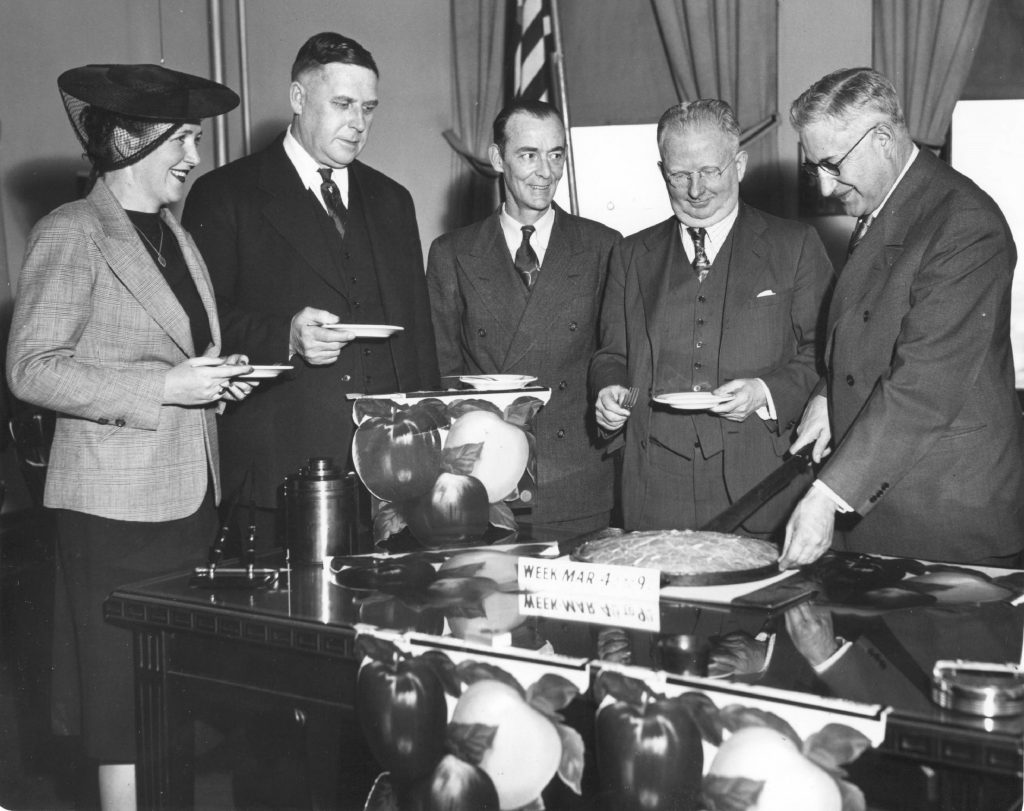
It was no surprise that apple pie was such an important thing. “As American as apple pie” runs the slogan. At the turn of the century, something neat and clean was in “apple pie order.” Apples were first domesticated in Central Europe and quickly spread. European immigrants brought apple trees to North America — and apple pie. Apple pie became a beloved symbol of home, good food and nostalgia.
Apple pie (and other apple dishes) were everywhere in turn-of-the-century Tacoma. Settlers had planted apple trees as soon as they started their homesteads, but with the development of railroads, Tacomans could also import apples from Eastern Washington. The Yakima Apple Depot (908 C Street) had apples delivered by express train the day after being picked. This included Rome Beauties, Winesaps, Spitzenbergs and Yellow Newton Pippins.
Shoppers could purchase locally grown apples at stores like MacLean Brothers. “There’s no finer apple grown anywhere than a Pierce County Gravenstein,” the store promised in an advertisement in the Tacoma Times on September 22, 1911. These apples sold for $1.25 a box. Washington is now the leading apple producing state in the United States.
Apple pie was featured at many community gatherings. For example, in October 1941, women brought apple pies to a speech at Mckenna School by Paul Shafer of the Tacoma station of the Washington Cooperative Eggs & Poultry Association. The school provided ice cream and coffee.
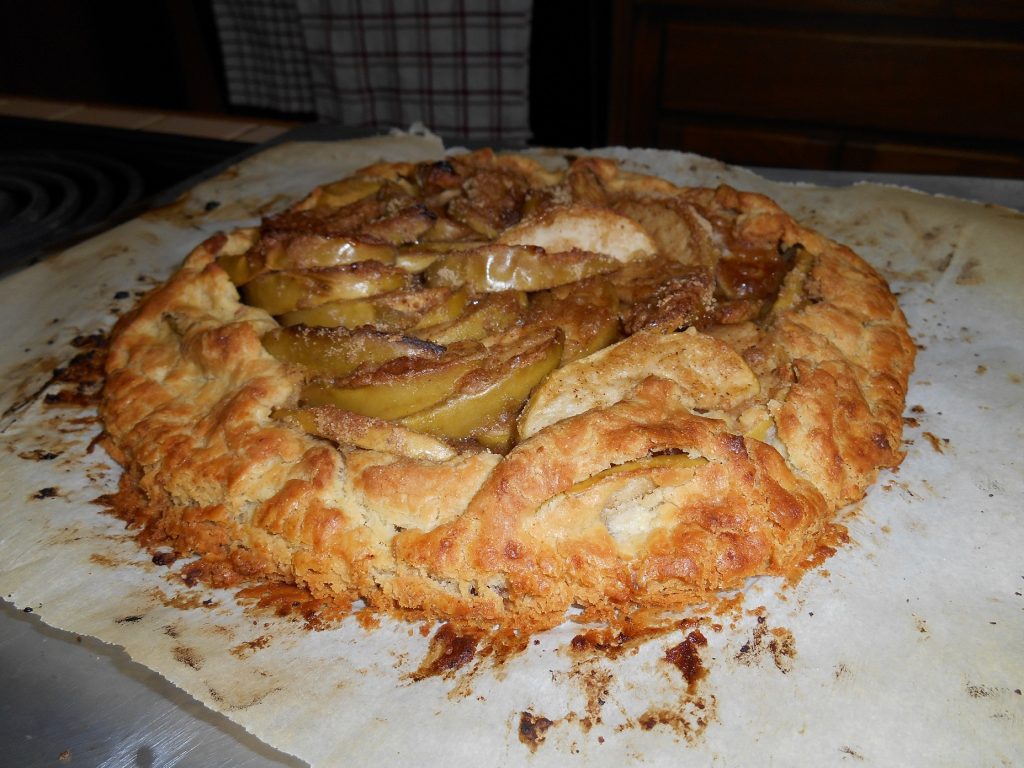
True to its patriotic and homey associations, apple pie featured in World War I homefront efforts. Construction workers building Liberty Hall for the Third Liberty Loan campaign were treated to apple pie at a banquet at the Commercial Club. Homesick soldiers thought of pie as well. “No more apple pie or dumplings,” wrote an unnamed soldier at Camp Lewis for a poem published in the Tacoma Times on September 11, 1917, “for we’re in the army now.” As part of efforts to cheer soldiers in training like this poet, Tacoma women donated 240 apple pies to National Guard soldiers at Camp Murray through the North End Red Cross auxiliary in August 1917.
Apple pies were cheap at local bakeries. An “Apple pie of quality, a tender crust and best apples” sold for ten cents at MacLean Brothers grocery, according to a November 29, 1912, Tacoma Times advertisement. Some apple pie devotees took other means. An apple pie was stolen from D. F. Cubit’s bakery (3814 North 26th) along with six sponge cakes and ten dollars in May 1939.
Those who wanted to make their own pies could turn to recipes in the Tacoma Times and community cookbooks. Cynthia Grey published regular variations on apple pies in the newspaper, sometimes through columns like “Mary’s Cookbook” and “Mrs. V.’s Recipes.” Apple pie featured on sample menus, served as dessert alongside dinners such as thin white soup and pork chops (February 25, 1914) or chicken stew with biscuits (March 16, 1904). Other guest columnists also sang apple pie’s praises. “If you add an individual apple pie,” wrote Caroline Coe on November 11, 1915, about workmen’s lunches, “the man who eats it will rise up and call you blessed.”
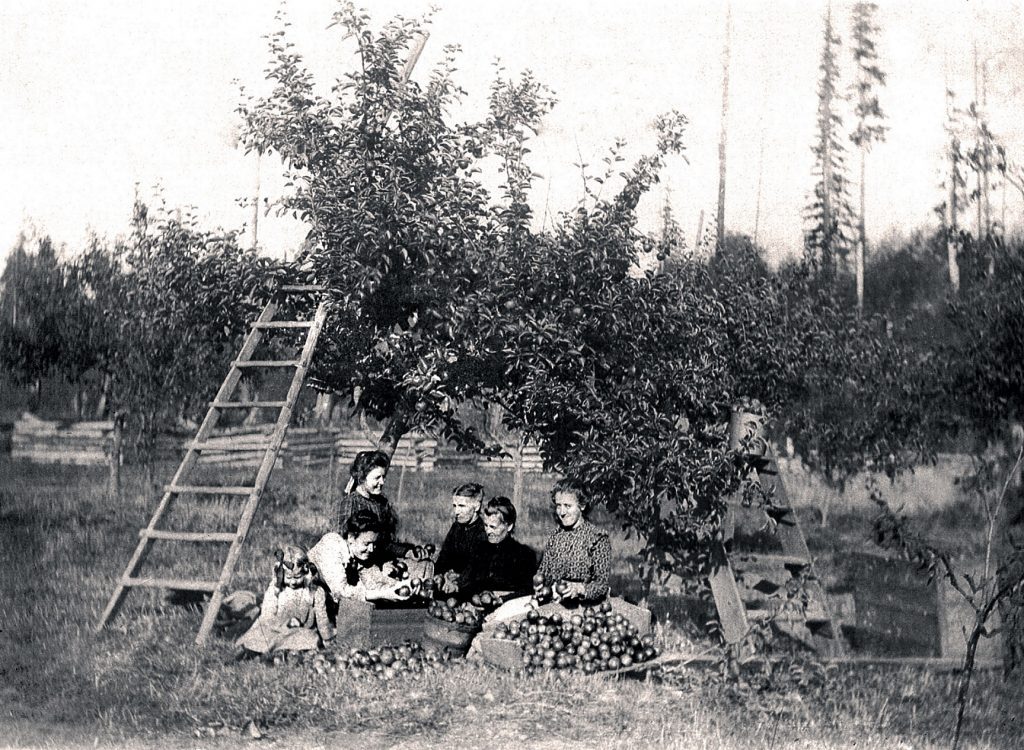
In later years, apple pie recipes sometimes appeared under the heading “Today’s Recipes” in the Tacoma Times. The newspaper offered different spins on the classic. Aspiring bakers could try “apple pie moderne” with a cornflake crust, published on October 19, 1939. Or they could try “apple pie with a flourish.” “Next time you serve apple pie, serve it hot,” the Tacoma Times suggested on February 26, 1941, “lathered with whipped cream and sprinkled with chopped walnuts.” Ice cream (or even cheese) was also favorite toppings for apple pie.
In whatever variation, apple pie remains a classic American dessert. Whether home-baked or store-bought, it is a delicious slice of nostalgia. Many Tacomans of years past would undoubtedly agree. “Did you ever see an apple pie that was big enough?” asked a Tacoma Times writer on December 5, 1911, “Neither did I.”






















